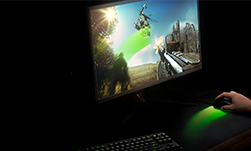I posted
this as an issue on Github, maybe someone here will have a
magic solution:
- TensorFlow version: 2.4.0-rc4 (also tried with stable
2.4.0) - TensorFlow Git version: v2.4.0-rc3-20-g97c3fef64ba
- Python version: 3.8.5
- CUDA/cuDNN version: CUDA 11.0, cuDNN 8.0.4
- GPU model and memory: Nvidia RTX 3090, 24GB RAM
Model training regularly freezes for large models.
Sometimes the first batch or so works, but then just a few
batches later and training seems stuck in a loop. From my activity
monitor, I see GPU CUDA use hovering around 100%. This goes on for
minutes or more, with no more batches being trained.
I don’t see an OOM error, nor does it seem like I’m hitting
memory limits in activity monitor or nvidia-smi.
I would expect the first batch to take a bit longer, then any
subsequent batches to take less than <1s. Never have a random
batch take minutes or stall forever.
Run through all the cells in the notebook shared below to
initialize the model, then run the final cell just a few times.
Eventually it will hang and never finish.
https://github.com/not-Ian/tensorflow-bug-example/blob/main/tensorflow%20error%20example.ipynb
Smaller models train quickly as expected, however I think even
then they eventually stall out after training many, many batches. I
had another similar, small VAE like in my example that trained for
5k-10k batches overnight before stalling.
Someone suggested I set a hard memory limit on the GPU like
this:
gpus = tf.config.experimental.list_physical_devices('GPU') tf.config.experimental.set_virtual_device_configuration(gpus[0], [tf.config.experimental.VirtualDeviceConfiguration(memory_limit=1024 * 23)])
And finally, I’ve tried using the hacky ptxas.exe file from CUDA
11.1 in my CUDA 11.0 installation. This seems to remove a warning?
But still no change.
Open to any other ideas, thanks.
submitted by /u/Deinos_Mousike
[visit reddit]
[comments]

 Measuring and optimizing system latency is one of the hardest challenges during game development and the NVIDIA Reflex SDK helps developers solve that issue.
Measuring and optimizing system latency is one of the hardest challenges during game development and the NVIDIA Reflex SDK helps developers solve that issue. NVIDIA has released updates to DLSS, NVIDIA’s Unreal Engine 4 Branch, and RTXGl.
NVIDIA has released updates to DLSS, NVIDIA’s Unreal Engine 4 Branch, and RTXGl.